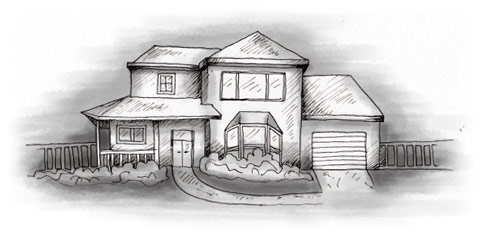If you want a property with abundant charm and character, a building for renovation or conversion, outbuildings, or a large plot, you must usually buy an old property. The advantages and disadvantages of buying a new home apply in reverse to an old home.

Many old properties purchased by foreigners in France are in need of restoration, renovation or modernisation. The most common examples are the many old farmhouses that have been neglected since they were built in the 18th or 19th centuries or even abandoned many years ago. In general, the French attitude to old buildings is one of almost total neglect until they’re literally in danger of falling down, when complete rebuilding is often necessary. In many rural areas it’s still possible to buy such a property for as little as €25,000.
Salty descriptions
When considering old properties that might be suitable, you should take vendors’ (and particularly agents’) descriptions with liberal amounts of salt: ‘à finir’ usually means there’s still plenty of work to be done; ‘habitable’ can mean ‘derelict’; ‘à rénover’ implies that major reconstruction is required; and, if anything is described as a ‘ruine’, you should be pleasantly surprised to find any walls still standing. Before spending time and money investigating old properties, you ask a lot of questions as to their condition. ‘Partly renovated’ usually means that part of a building is habitable, i.e. at least has sanitation, but the rest is in dire need of restoration. Bear in mind also that some rural properties lack basic services such as electricity, a reliable water supply and sanitation.
Before buying a property requiring restoration or modernisation, you should consider the alternatives. An extra €20,000 or €30,000 spent on a purchase is usually better value than spending a similar amount on building work. It’s often cheaper to buy a restored or partly restored property than a ruin in need of total restoration, unless you’re going to do most of the work yourself.
The price of most restored properties doesn’t reflect the cost and amount of work that went into them, and many people who have restored a ruin would never do it again and advise others against it.
Restoration and Renovation

If you’re planning to buy a property that needs restoration or renovation, obtain an accurate estimate of the costs before signing a contract. Many foreign buyers are tempted by the low cost of old homes and believe they’re getting a wonderful bargain, without fully investigating the renovation costs. Don’t buy a derelict property unless you have the courage, determination and money to overcome the many problems you will certainly face.
Renovation or modernisation costs will invariably be higher than you imagined or planned! Taking on too large a task in terms of restoration is a common mistake among foreign buyers in all price ranges.
Unless you’re prepared to wait until you can occupy it or are willing to live in a caravan for a long time while you work on it, it’s better to spend a bit more and buy something habitable but untidy than buy a property that needs completely gutting before you can live in it.
Bear in mind also that, if you buy and restore a property with the intention of selling it for a profit, you must take into account not only the purchase price and the restoration or modernisation costs, but also the fees and taxes included in the purchase, plus capital gains tax if it’s a second home. It’s difficult to sell an old renovated property at a higher than average market price, irrespective of the amount you’ve spent on it. The French have little interest in old restored properties, which is an important point if you need to sell an old home in a hurry in an area that isn’t popular with foreign buyers. If you want to make a profit, you’re better off buying a new home.
Best value
Nevertheless, old properties can be better value than new homes and there are still some good bargains around, although you must carefully check their quality and condition. Note also that work on a property over five years old attracts VAT at just 5.5 per cent instead of the standard 19.6 per cent. As with most things in life, you generally get what you pay for, so you shouldn’t expect a fully restored property for €50,000. Note that, if you want a restored home, you should buy one from someone who has lovingly and sensitively restored it, rather than from someone who has transformed it out of all recognition or renovated it so badly that all the work will have to be redone.
At the other end of the scale, for those who can afford them, there’s a wealth of beautiful châteaux, manor houses (manoir and maison de maître) and water mills (moulin), many costing no more than an average four-bedroom house in many other countries. However, if you aspire to live the life of the landed gentry in your own château or farm with umpteen outbuildings and several hectares of land, bear in mind that the reason there are so many on the market (and the relatively low prices) is that the cost of upkeep is astronomical!
This article is an extract from Buying a home in France. Click here to get a copy now.

